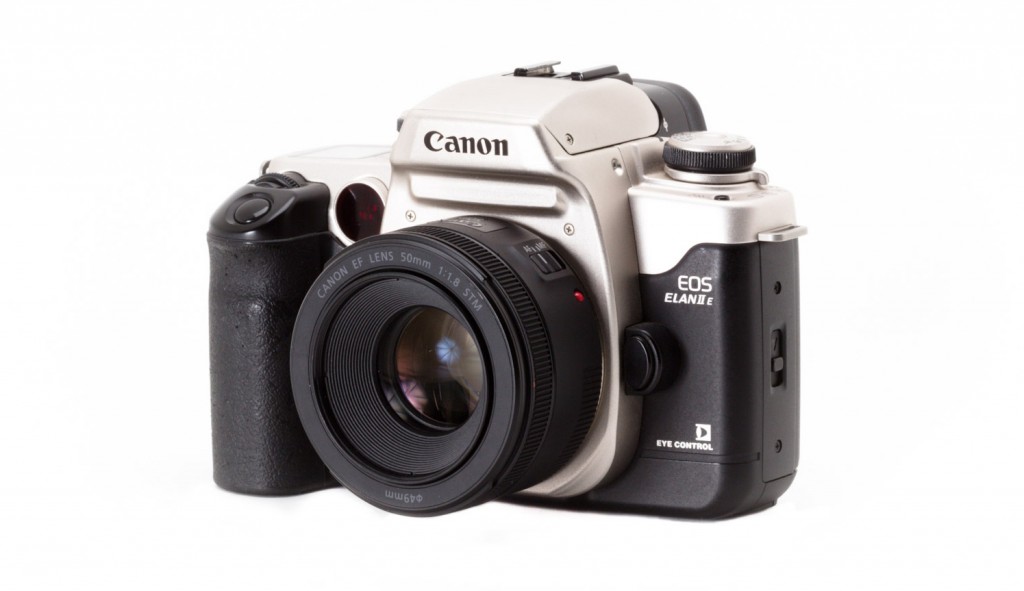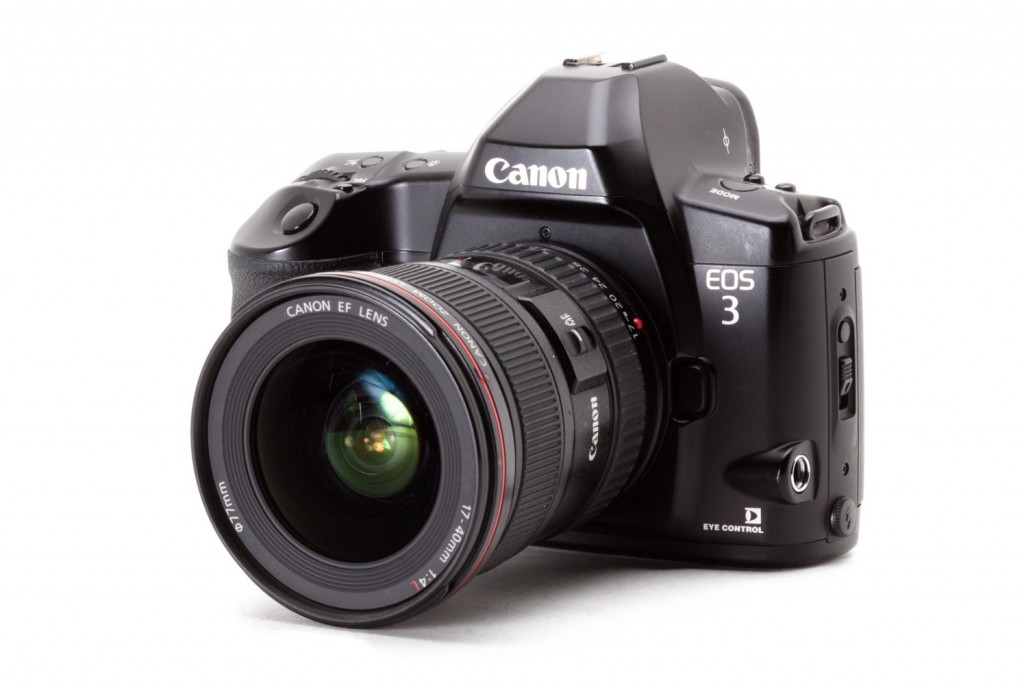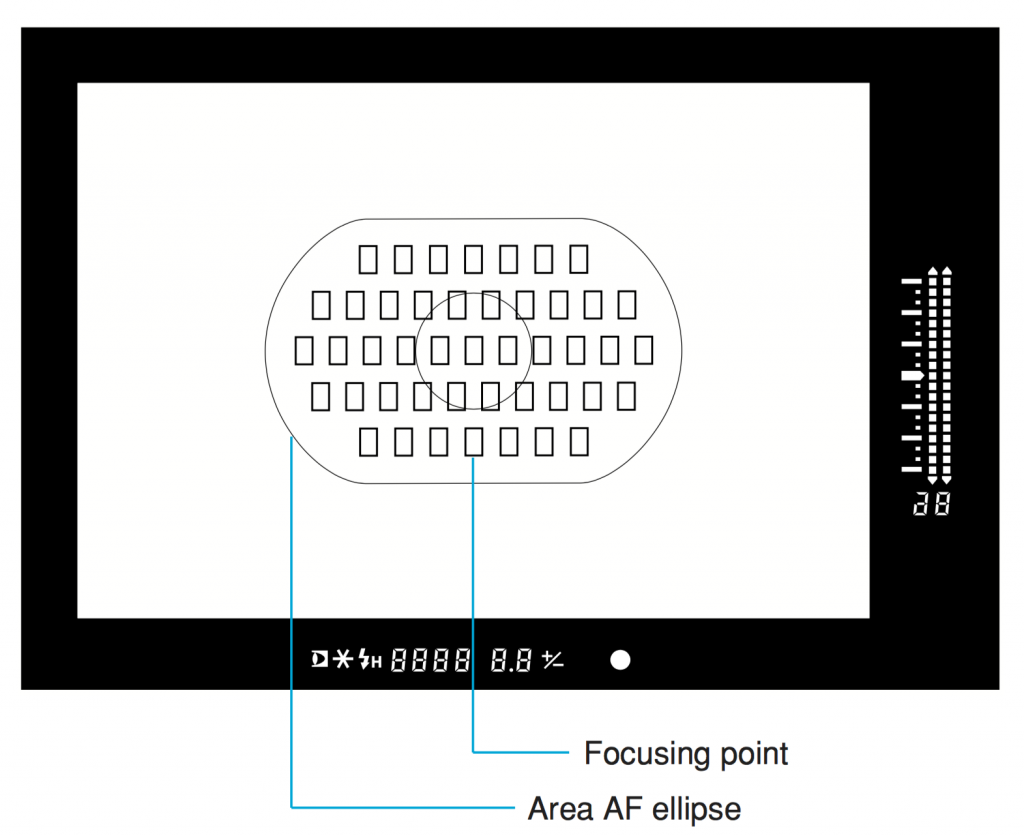
Over the past few years, we’ve become spoiled by a lot of great autofocus technologies like face detection, tap-to-focus, and subject tracking. But before we had those things, we had Canon’s eye-controlled focus, a technology that made its appearance in film SLRs, but which never quite made the jump to digital cameras.
For those unfamiliar with eye-controlled focus, let me provide a quick primer. The system made its debut way back in 1992 on the EOS A2E, and remained part of the Canon system until the EOS Elan 7NE in 2004. It promised ‘focus where you look’ functionality, meaning you could activate your AF point of choice just by looking at it.
As I recall, there were generally two sets of users when it came to this technology: those for whom it worked, and those for whom it absolutely didn’t. There weren’t many in between.
Even today, whenever we review a Canon camera, someone will post a comment expressing a desire for Canon to bring back eye-controlled focus. And I have to admit, I’m right there with them. I have great memories of it.

I got my first taste of eye-controlled focus on the EOS Elan II E, and instantly fell in love with it. In fact, I liked using it so much that I switched from a Nikon to a Canon system. The ability to focus by eye was just too much to resist.
I later upgraded to the EOS 3 – still one of my favorite cameras of all time – which had a much more advanced 45-point AF system. Eye control on the EOS 3 was more sophisticated than on the Elan II E: it had a calibration procedure that involved looking at selected AF points in a prescribed manner, allowing the camera to tailor its response to your eye. Supposedly, if you repeated the calibration process under different conditions, performance would improve over time.
The EOS 3 also had the ability to store three registers of calibration data. This was especially useful for glasses wearers because you could use one register to calibrate for your naked eye, and another to calibrate while wearing glasses or contact lenses.
Did it work? It depends on who you ask. Even around the DPReview office, you’ll find opposing views. In my experience, the system didn’t always land on the exact AF point that I wanted to use, but it usually landed close enough that it wasn’t an issue. At least that’s the way I remember it.
But as we all know, memories can be selective. I sometimes wonder if eye-controlled focus was as good as I remember it being, or if those memories are just a result of nostalgia for a bygone technology. To find out, I pulled those old Canon cameras out of a closet and put them to the test.

The Elan II E worked just as well as I remembered it, performing at about 90% accuracy in my hands. However, it’s worth noting that this camera had a fairly rudimentary 3-point AF system, with well-isolated AF points. Basically, the camera just had to figure out which third of the viewfinder you were looking at to pick the correct AF point.
The EOS 3 was a bit of a different story. Its 45 AF points were crowded close together, requiring a higher degree of precision when reacting to eye movement. I could reliably get it to focus on the general region of the viewfinder I was looking at, but not with the degree of accuracy I remember.
With a bit of practice, I’m sure I could improve my success rate a bit, which is probably why I remember the system working better than it does in my hands today. Alternatively, it’s nostalgia. To be honest, I’m not sure which it is.

So, would I exchange today’s modern AF systems for eye-controlled focus? Not a chance. Features like face detection (and even eye detection) actually solve the ‘where to focus’ problem in many cases, and features like subject tracking would be hard to give up.
However, I still love the idea of eye-control focus and believe it would have a useful place on today’s cameras. There are times when I’m moving focus points around with a joystick or D-pad and find myself thinking ‘I wish I could just look at my subject and focus.’
Technology has advanced a lot in the past couple decades. When eye-controlled focus was introduced in 1992, Microsoft was just launching Windows 3.1, and CERN was still rolling out this new thing called ‘ The World Wide Web.’ In that context, I’m sure a modern eye-controlled focus system could be much more effective, and work for a higher percentage of users, than one introduced during the film era.
Sоurсе: dpreview.com









































